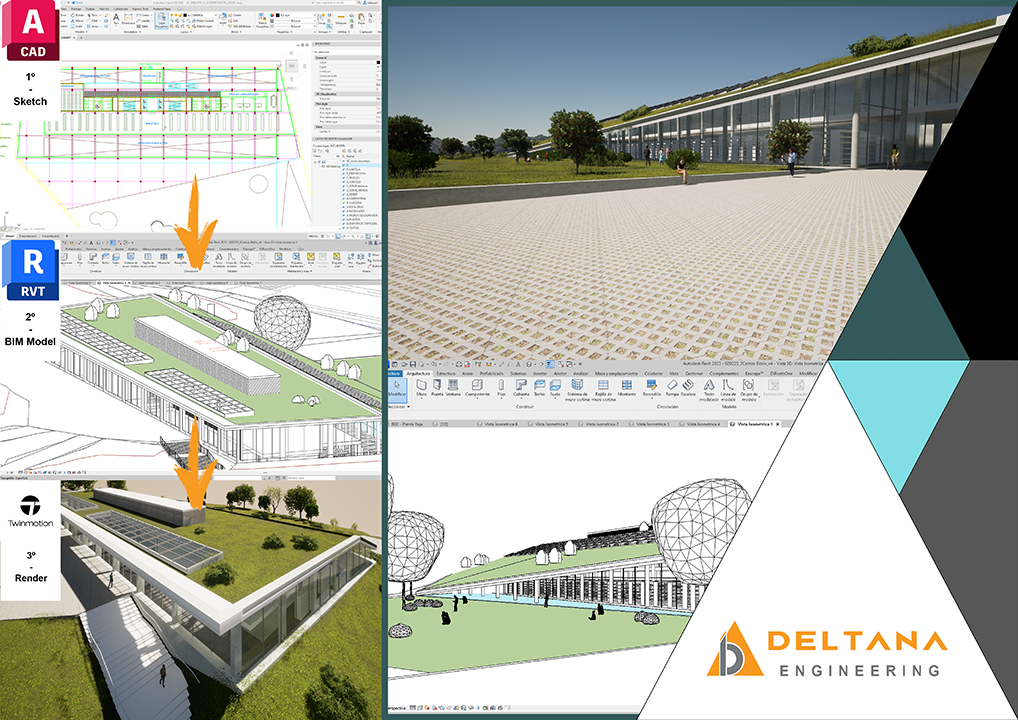12/09/2023
In this article, we will explore an effective workflow that spans from the initial sketch in AutoCAD to the final export of the model to Twinmotion, with a focus on how to assign materials in Twinmotion. Additionally, we will discuss the efficiency of this process in obtaining high-quality renders.
Step 1: Sketching in AutoCAD
The process begins with the initial sketch in AutoCAD. Here, architects and designers create architectural plans and elevations for a project. AutoCAD offers precise tools for drawing and editing geometry, allowing the creation of a solid foundation for the 3D model.
Step 2: Modeling in Revit
Once the initial sketch in AutoCAD is complete, the files are imported into Autodesk Revit. Revit is a powerful tool for creating parametric 3D models and BIM (Building Information Modeling). Here, architectural elements are built in 3D, adding details such as walls, windows, doors, and other components. Revit also allows for assigning properties and materials to each element, which will facilitate material assignment in Twinmotion.
Step 3: Export to Twinmotion
Once the 3D model is complete in Revit, it is exported to Twinmotion. Twinmotion is a real-time rendering engine that provides the ability to create photorealistic visualizations quickly and easily. The export is done through common exchange formats such as FBX or DWG, allowing for a seamless transition between applications. One of Twinmotion's key advantages is its ease of material assignment. To do this, first, the model is imported, and then access is given to the built-in material library. From there, textures and predefined materials can be dragged and dropped onto the model's objects. Twinmotion allows for adjusting parameters such as reflectivity, brightness, and texture, enabling further customization of materials to align with the project's vision.
Conclusion: Efficiency of the Process for Obtaining Renders for Bids
The workflow from AutoCAD to Twinmotion is highly efficient for obtaining high-quality renders for presentations to bids and clients. The combination of tools like Revit and Twinmotion allows for a smooth transition from 2D design to 3D modeling, simplifying material assignment and the creation of photorealistic visualizations.
Twinmotion's user-friendly material assignment and real-time rendering capabilities save time and resources, making it a valuable tool for architects and designers. In conclusion, this process offers significant efficiency in producing stunning renders that can enhance project presentations in bids and ultimately increase the chances of success in the competitive world of architecture and design.





